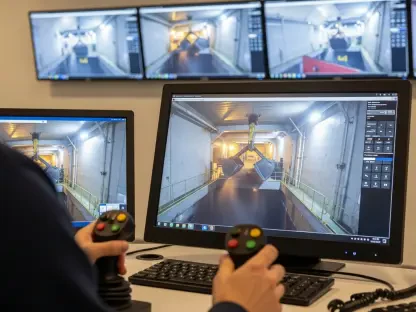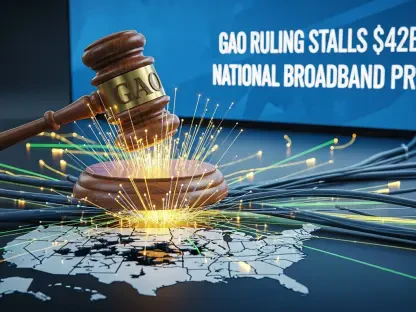The cellular IoT module market has witnessed a remarkable resurgence, marked by a 23% year-over-year growth in the first quarter of 2025. This momentum highlights the sector’s recovery from a challenging period in 2023, where it faced a 16% decline due to inventory correction issues. As demand escalated, the industry managed to adapt, benefiting from increased shipments by the end of 2024. An impressive 15% increase had already signaled the market’s revival, showcasing the sector’s resilience and ability to overcome adversity. With nearly 18.8 billion global IoT connections, including approximately four billion utilizing cellular IoT connectivity, this growth carries substantial implications for stakeholders across multiple industries. The significant uptick in demand and the successful adaptation strategies of industry players underscore emerging market dynamics, highlighting the nuanced interplay of technological progress, geopolitical influences, and regulatory shifts that characterize the current landscape.
Geopolitical Influences and Market Dynamics
The cellular IoT market operates amid mounting geopolitical tensions, particularly between significant global players like the US and China. These tensions have become a crucial factor influencing competitive strategies within the sector. Notably, the inclusion of Quectel, a major entity with a 40% market share, in the US Department of Defense’s 1260H List reflects the increasing impact of geopolitical dynamics. Identified as operating within the US as a “Chinese military company,” Quectel faced regulatory scrutiny. Despite these challenges, the company demonstrated resilience, achieving a 31% year-over-year growth in shipments in the first quarter of 2025. The inclusion of such companies on regulatory lists has resulted in a reassessment of sourcing strategies by Western manufacturers. Although initial responses were limited, the market anticipates potential shifts in sourcing practices that could reshape competitive dynamics in the future.
Beyond individual strategies, geopolitical developments have shifted the broader market’s foundation, leading to a reevaluation of risk management and localization strategies among global stakeholders. Western companies have increasingly considered adjustments to their supply chains to mitigate potential vulnerabilities and ensure consistent service delivery. This reassessment is a strategic pivot prompted by the unpredictability inherent in the current geopolitical climate. As companies strive to navigate these uncertainties, flexibility and adaptability have become essential attributes. Economies of scale and supplier relationships are revisited to secure components vital to the developing cellular IoT ecosystem. The nuanced interplay of politics and technology further complicates strategic decision-making within this sector, demanding a balance of innovative solutions and risk mitigation strategies.
Market Concentration and Strategic Shifts
In the evolving cellular IoT landscape, the concentration of market power among a few key players highlights the competitive pressures shaping the industry. Currently, five companies command 73% of global shipments. Following Quectel, China Mobile holds a 15% market share, reporting an impressive 100% year-over-year growth, largely attributed to the deployment of LTE CAT 1 bis modules. Fibocom, Sunsea AIoT, and Telit Cinterion complete the group, each with distinct market shares and growth trajectories. While Quectel dominates, these companies have carved out substantial niches, demonstrating adaptability and strategic foresight in expanding their market presence.
Amid these dynamics, there have been notable strategic realignments independent of geopolitical pressures. Switzerland-based u-blox’s decision to exit the cellular IoT module business exemplifies market adjustment. At face value, representing just 1.1% of global revenue may seem negligible, but this shift introduces new opportunities for Western suppliers. Previous u-blox customers are now exploring alternative options, presenting a competitive advantage for new entrants. Ohio-based startup Eagle Electronics, for instance, capitalized on this development, establishing production facilities with licensing agreements from Quectel yet maintaining operational independence. This emergence underscores the sector’s fluidity, where strategic exits and market entries signal the continuous reshaping of competitive dynamics.
Regulatory and Technological Developments
Regulatory influences remain pivotal in shaping the cellular IoT market’s trajectory, particularly as new cybersecurity protocols come into play. The European Union’s Radio Equipment Directive (RED), set to take effect in August 2025, mandates comprehensive cybersecurity measures, compelling companies to incorporate enhanced features at the module level. Western suppliers, closely aligned with these regulatory standards, are poised to benefit from such changes. Conversely, compliance challenges may hinder certain Chinese vendors, adding a layer of complexity to market competition. These regulatory shifts serve as catalysts for innovative approaches to module design and functionality, emphasizing the critical intersection of technology and policy in advancing industry standards.
Technological advancements present lucrative opportunities for market expansion, particularly with the growing adoption of LTE Cat 1 bis modules. Recognized for their cost-effective and globally compatible nature, these modules have recorded a substantial 122% year-over-year increase in shipments. This growth positions LTE Cat 1 bis as a compelling alternative to existing technologies like NB-IoT and LTE-M. Moreover, advancements in 5G technology continue to expand its applications across various domains, including fixed wireless access, automotive communications, and industrial usage. The emergence of 5G RedCap, designed for mid-tier IoT applications balancing cost, power, and performance, exemplifies the ongoing evolution in module technologies. These technological trends represent a crucial dimension of market growth, offering avenues for expanding connectivity and enhancing device efficiency across diverse industries.
Navigating Future Challenges and Opportunities
The cellular IoT market is influenced by growing geopolitical tensions, particularly between major global players like the United States and China. This atmosphere significantly impacts competitive strategies in the industry. For example, Quectel, which holds a 40% market share, found itself on the US Department of Defense’s 1260H List, highlighting the growing geopolitical importance. Considered a “Chinese military company,” Quectel faced heightened scrutiny. Despite these hurdles, it managed to show resilience, recording a 31% increase in shipments year-over-year in the first quarter of 2025. Companies like this being on such lists have prompted Western manufacturers to rethink their sourcing strategies. While initial responses have been muted, there is anticipation of possible shifts that could alter competitive dynamics. Broadly, these geopolitical developments have prompted stakeholders to reevaluate risk management and localization strategies. Western companies are now more focused on adapting supply chains to diminish vulnerabilities, ensuring reliable service delivery.









